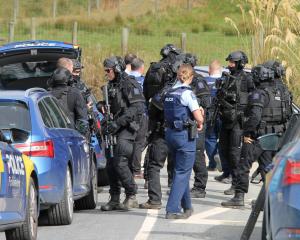
No additional areas in Dunedin have been indicated for greenfields residential development because enough housing capacity is already built into planning scenarios, a hearing panel decided.
It was argued at the hearing this month Dunedin’s draft future development strategy had an over-reliance on housing intensification to meet the city’s needs in the coming decades and not enough housing choice had been allowed for.
The panel did not agree.
While some landowners wanted additional greenfields residential land, the panel decided none was needed based on a forecast surplus of housing capacity, panel chairman Rob van Voorthuysen said.
The panel also noted little technical evidence was presented at the hearing challenging a housing capacity assessment update from October last year.
This was a key document behind the broader strategy.
Some of the land identified at the hearing might yet be opened up for residential development because district plan zoning for it is being appealed in a separate legal process.
The future development strategy was produced by the Dunedin City Council and Otago Regional Council and it covered expected need for housing and business land, as well as constraints to development, such as Three Waters network limitations.
A hearing was held this month and a full decision-making report was released late last week.
One key decision was identifying land beside Mosgiel as a possible site for an inland freight logistics hub.
"It has benefits in terms of its location next to existing rail facilities and the existing Mosgiel industrial area, but has constraints that need addressing, in particular provision of a heavy-traffic bypass for Gordon Rd", the report said.
Another significant decision was to leave out two areas that had been proposed for future residential intensification.
They were known through the hearing as Area 11 and Area 6, or Andersons Bay (Moana Cres) and Wakari.
There were worries about multi-storey development in Wakari causing shading of neighbouring properties and various challenges in Andersons Bay, including natural hazards and narrowness of streets.
The panel decided not to add any entirely new greenfields business land areas beyond those already signalled in the draft document for possible rezoning in Burnside and Fairfield.
However, a larger area for potential industrial zoning was indicated in Burnside.
The panel highlighted submissions by Te Rūnanga o Ōtākou and Kāti Huirapa Rūnaka ki Puketeraki about enabling mana whenua to make the best use of native reserves.
"That required the prioritisation of essential infrastructure for those reserves and the communities they support", the panel said.
Mana whenua sought extension of reticulated wastewater and drinking water services along Otago Peninsula between Portobello and Harington Point, and at Brinns Point, and reticulated wastewater services to Puketeraki and Waitati within the medium term.
The panel agreed this was desirable.
Its findings do not force the two councils to deliver work programmes in a way they had not previously planned, but the recommendations will need to be taken into account.
Dunedin Mayor Jules Radich welcomed completion of the strategy, which covered a 30-year time span.
"We all want to see Dunedin thrive and this strategy spells out how and where growth can occur and the infrastructure we need to support that growth", he said.
Otago Regional Council chairwoman Gretchen Robertson described the strategy as "a holistic approach to city-building to ensure a healthy, vibrant and thriving Dunedin for generations to come".
City council city development manager Anna Johnson said the next step was for the two councils to prepare an implementation plan.












